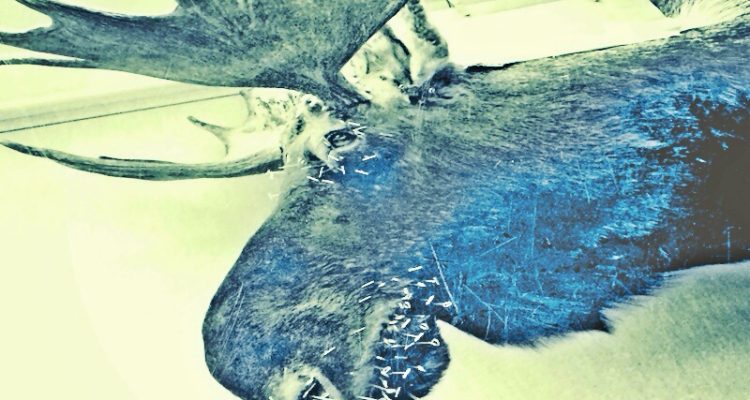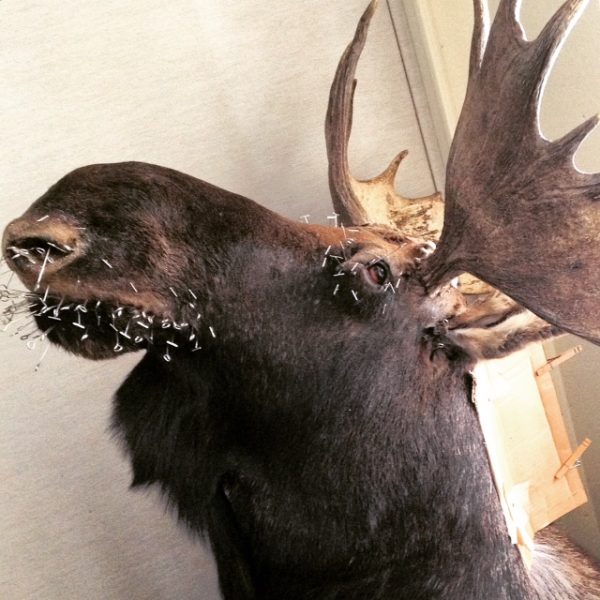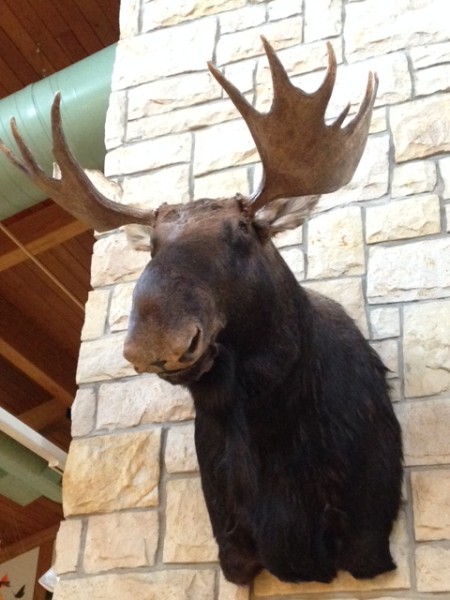“Hi, this is Taylor at the front desk at Oglebay. There’s a gentleman here trying to deliver a moose to the Nature Center.”
In all fairness, I knew the moose arrival was imminent. I just didn’t know exactly when. Still, makes for an interesting phone call on an April Saturday night.
Sometime mid-February, I got a phone call from the West Virginia Department of Natural Resources Law Enforcement Division (WVDNR) asking if Oglebay Institute’s Schrader Environmental Education Center would be able to use a moose shoulder mount that was part of a poaching case. A shoulder mount is a taxidermist’s description: it includes the head and neck up to the shoulders of an animal for hunters to hang on a wall as a trophy. My initial reaction was, “Nope, but thanks for calling!” I’m not a big fan of critter mounts, and we don’t have moose in W.Va.
As a staff, we reviewed and revised our mission and vision statements about 18 months ago and took out the vague references to the natural world and narrowed our focus to West Virginia. In other words, we wanted to educate those coming through Schrader Center and in various programs about the things they would see when they walked out the back door. A moose was definitely not a normal sight in Wheeling, the one above the bar at the Alpha notwithstanding.
Nevertheless, I thought about it, and once I heard its story, I decided, “Yes, we could take the moose.”
Here’s why.
This particular moose had been illegally shot in Saskatchewan, Canada. The hunter was on a paid game hunt on a tribal reservation where there are no hunting restrictions while on tribal lands. So, for a fee, you can head to this particular part of Canada and a guide will take you hunting. Since this reservation is not a big place and the locals have been hunting the area for years, there’s not much left to hunt on those 100 square miles. So the guide, after finding nothing to shoot, takes our hunter 21 miles off of the reservation to find something big and furry. Enter Bullwinkle, and we have one dead moose.
One dead moose was 21 miles away from where the hunter and guide were supposed to be. No pictures were taken right after the kill: the typical gun, big antlers, and hey-look-what-I-shot photos to show the folks back home. Instead, the guide hurried the hunter back to the reservation to take pictures in front of the town hall. Forge a bit of paperwork for the Canadian game commission, and they’re ready to head back to the states.
“Have anything to claim?” says the border guard. “Nope,” says guide and hunter.
Moose are not pocket-sized creatures. They can stand 6 ½ feet at the shoulder. Antlers on a Bull Moose would scrape most folks’ ceiling and wouldn’t make it through generous sliding doors at 6 feet wide. Because it was to be a shoulder- mount trophy, most of our moose was left in Saskatchewan. Guide and hunter cleverly cut the moose’s skull so that the antlers fold in on themselves and fit in a suitcase and a big one at that. A full-grown set of antlers can weigh upwards of 40 pounds.
Once in the U.S., the moose made its way to Ohio to a taxidermy shop for mounting. Meanwhile, literally back at the ranch, Canadian authorities know they have had a moose poached somewhere near the reservation. They’ve been watching this particular guide for some time and have been waiting for a chance to catch him doing something illegal. Border guards notified the Game Warden when they read the fishy hunt documents, knowing that this may be their chance to catch the guy. With a little investigation, the warden is able to find the kill site where they take blood and tissue samples, and they wait for the guide to come back to Canada.
Enter WVDNR.
Apparently our hunter has also been part of more than one rodeo. Officials have been waiting for him to make a mistake, too. Once the hunter dropped the moose off, WVDNR decides to investigate. By taking DNA samples from the base of an antler, they match it to the DNA from the kill site in Canada, and we have a court case. The hunter faced charges for an illegal kill, transporting across international lines, forged paperwork, transporting across several state lines, and lying to the Canadian game commission. He’s been fined in both countries. The guide is facing big fines in Canada, and he’s lost his license and may also face jail time.
“So can I let this guy into the Schrader Center with a Ranger? Mr. Hargleroad really doesn’t want a moose in his office.”
When I arrived at work on Monday, there was a moose in the stairwell, and it was honestly kind of creepy. Interesting, but creepy. You see, the taxidermist wasn’t able to complete his work before the moose was seized. Its face is full of taxidermy pins to hold the skin in place while it dries.
When I got to my desk, I found a note, “Need a receipt for the moose.”
Punk Rock Bullwinkle.
Sid Moose-ious.
So now that we have the moose mount, we have an interesting story to tell about how it came to us from Canada, what poaching is and why it is illegal, what moose eat as the largest species of deer, and what eats moose. Now that the taxidermy is legally finished, the moose is displayed in the exhibit hall on the big stone wall just inside the entry. And we’ll be telling his story.
The Moose Abides.




